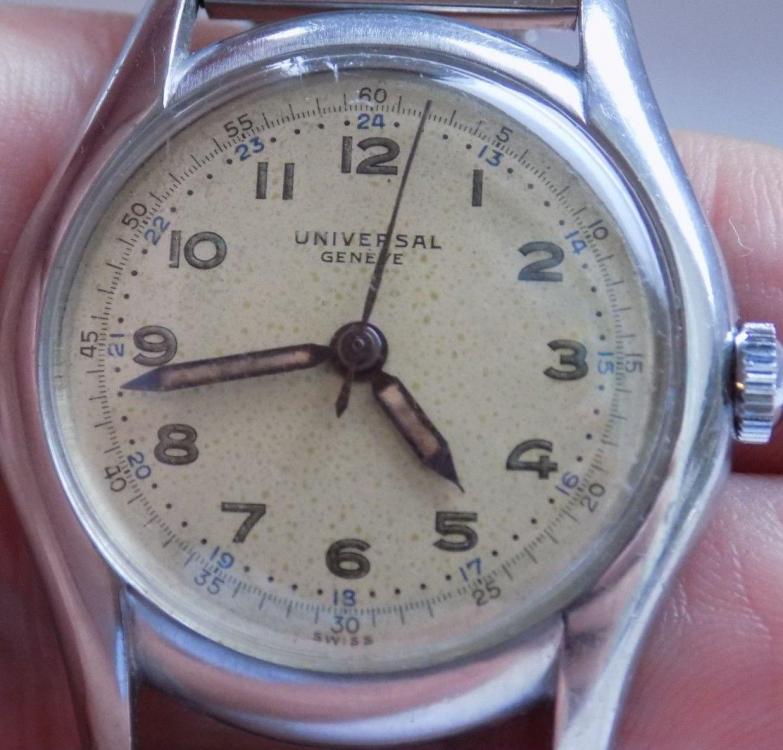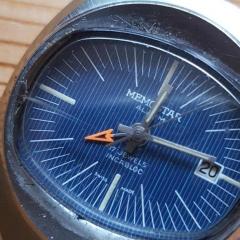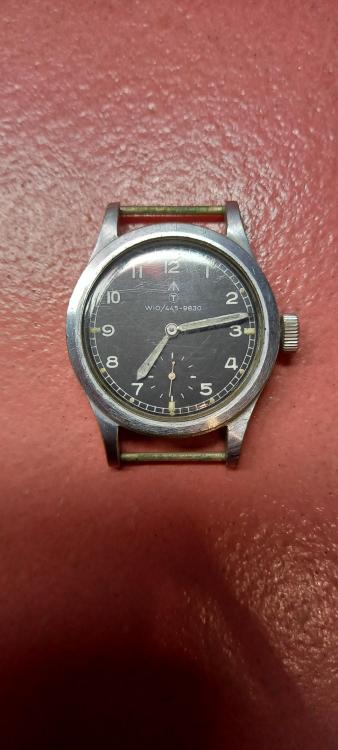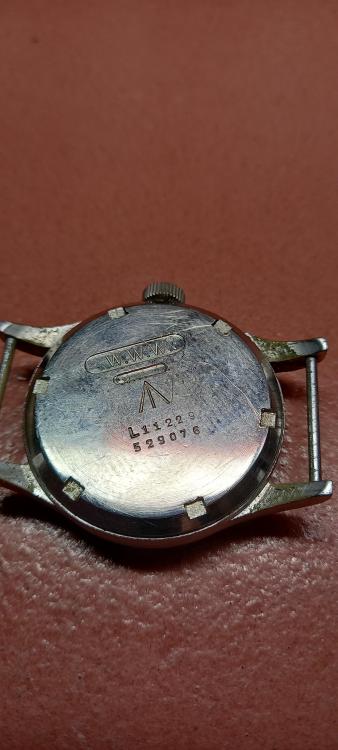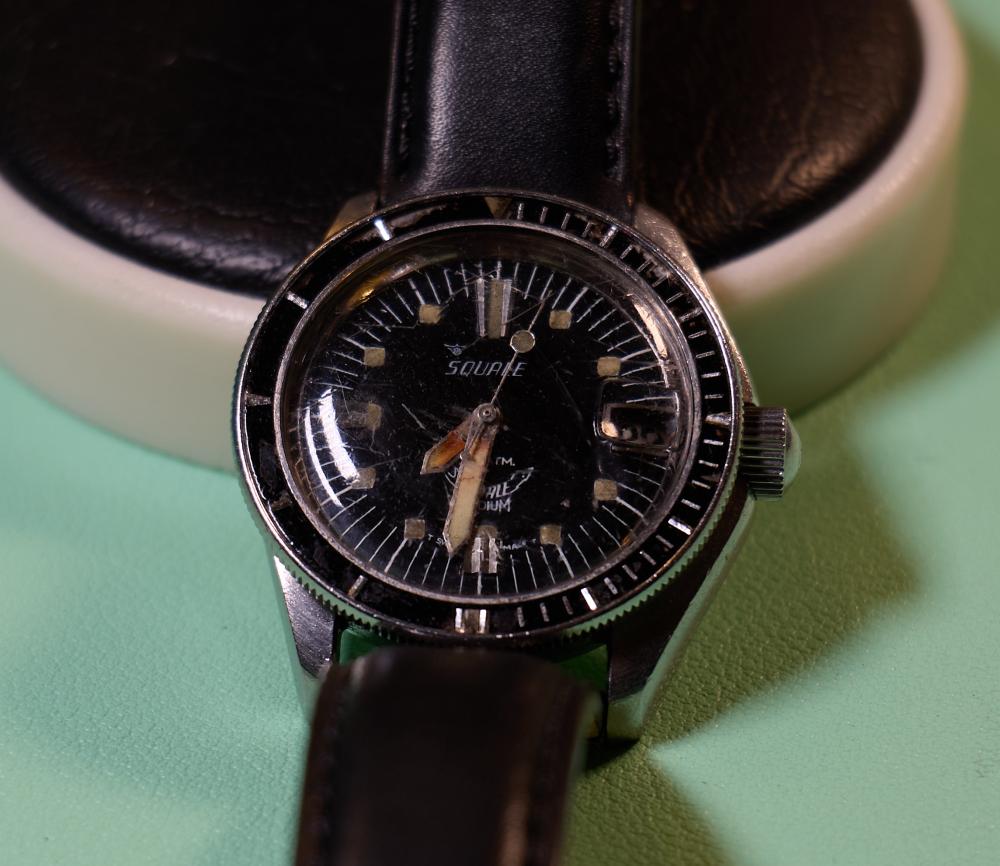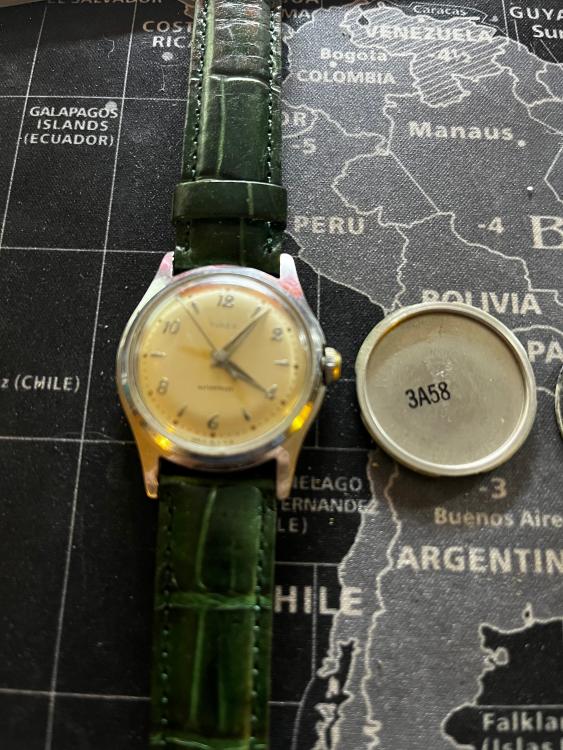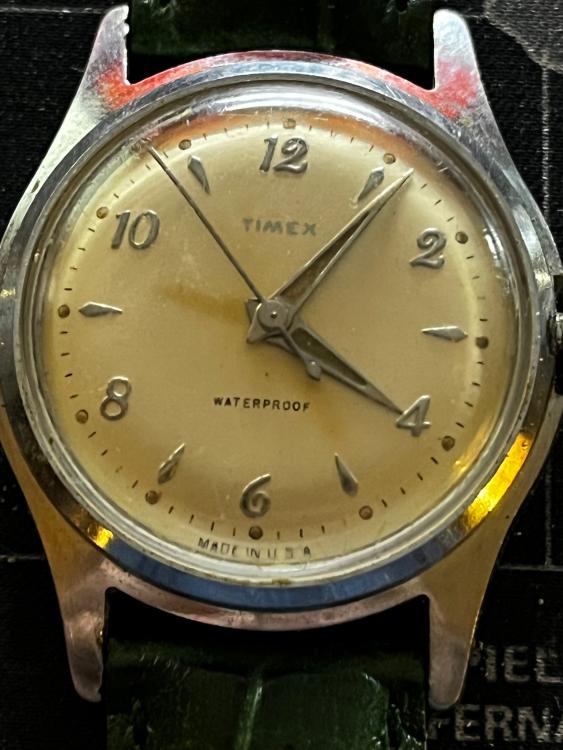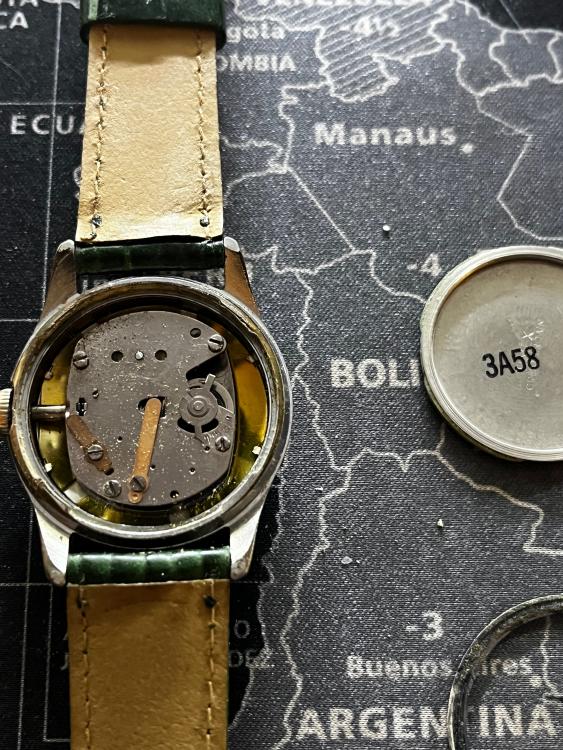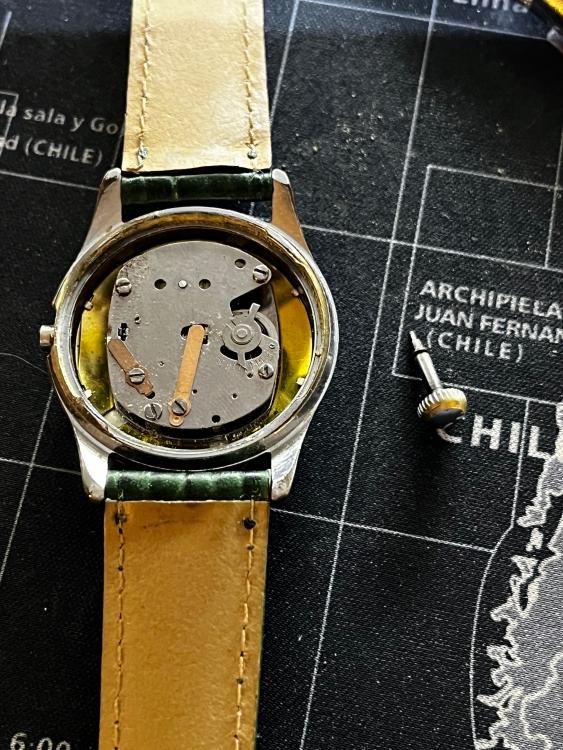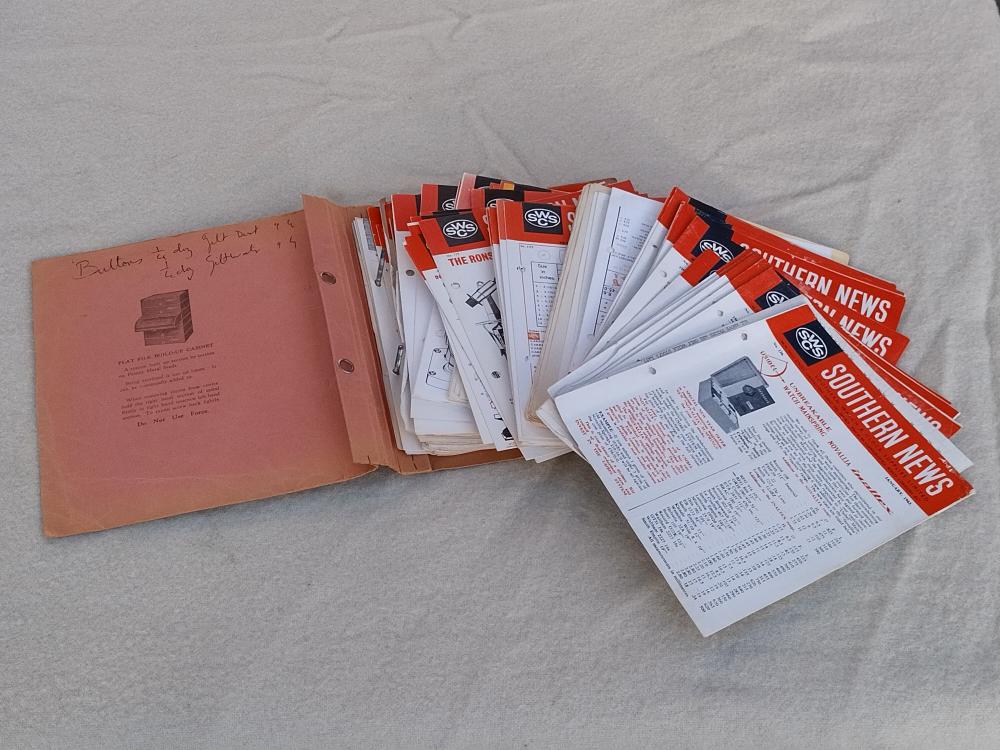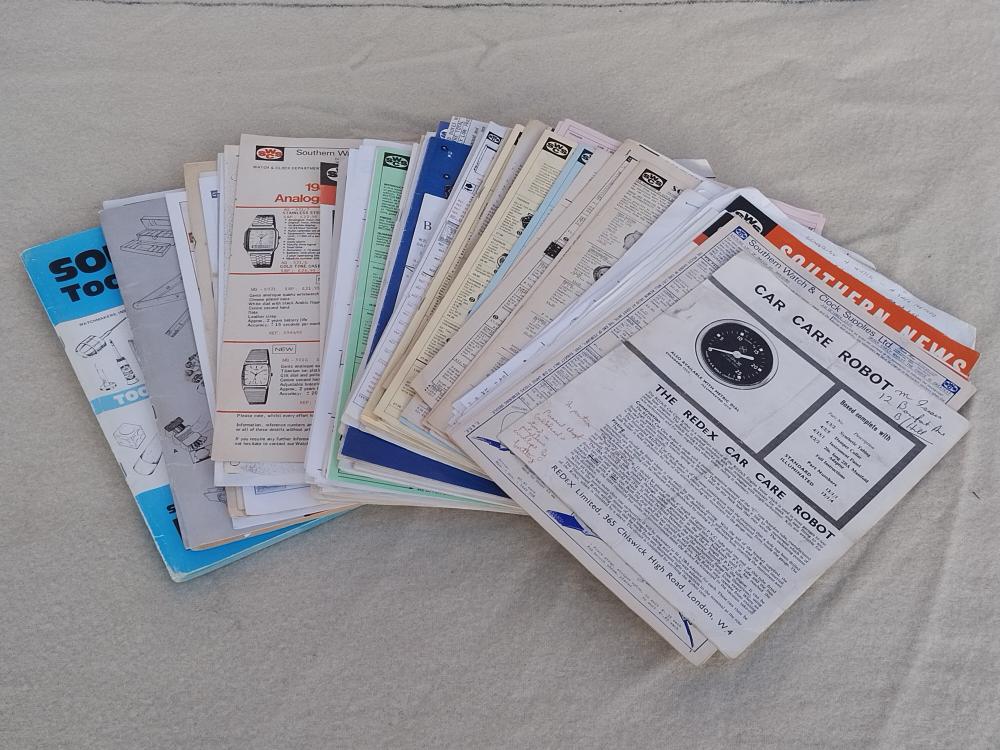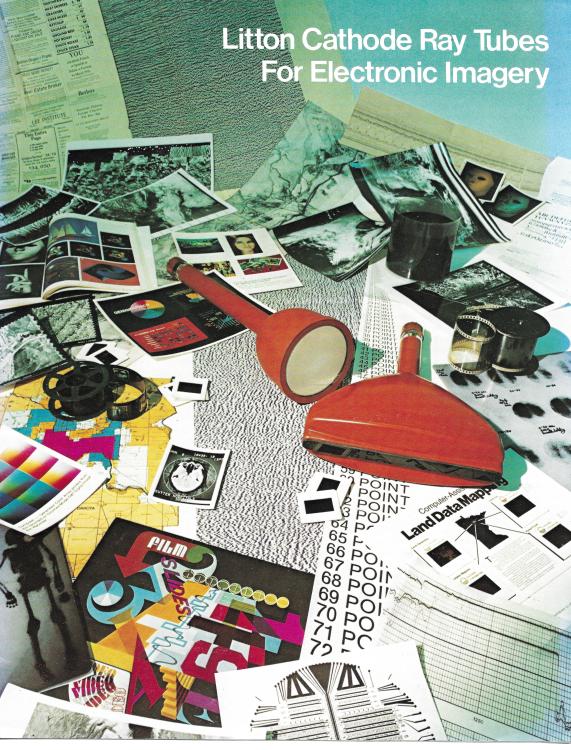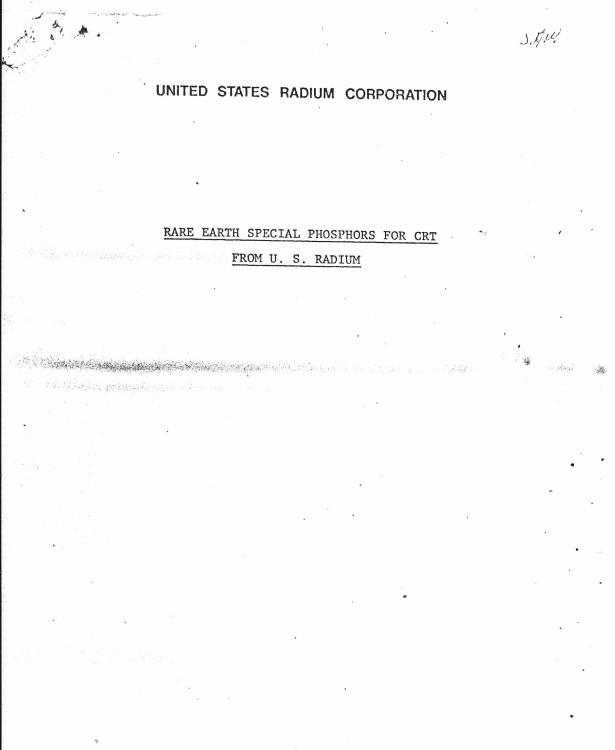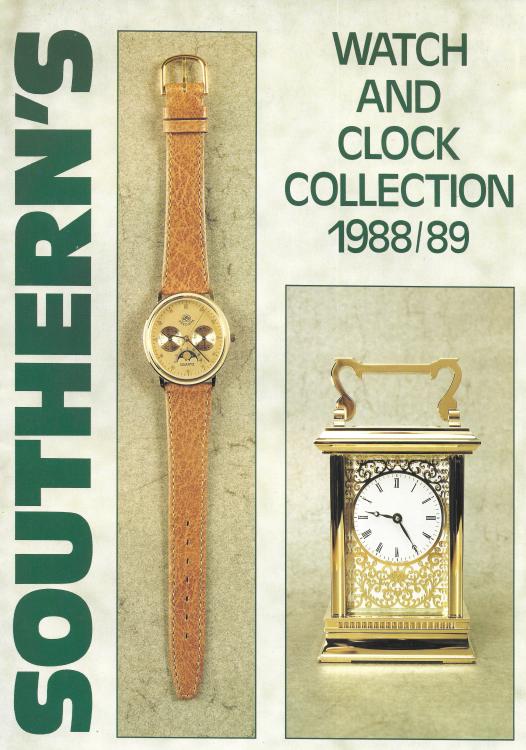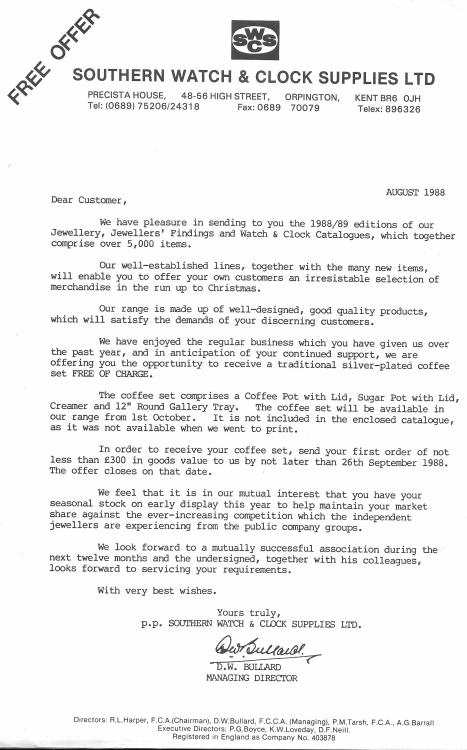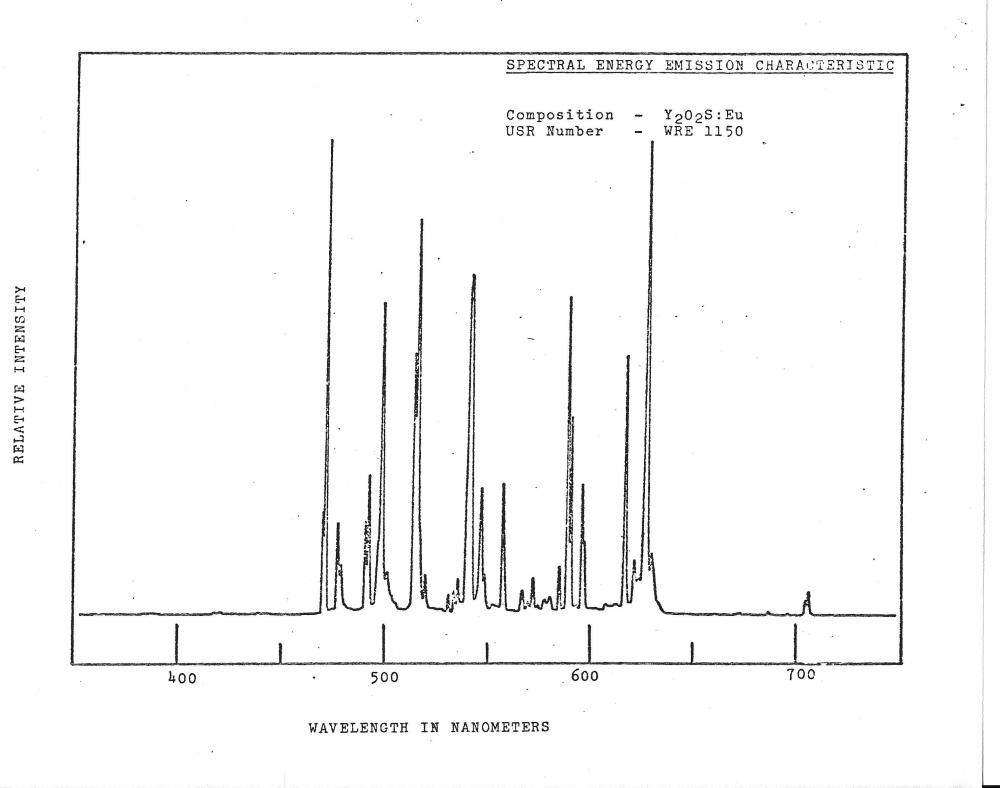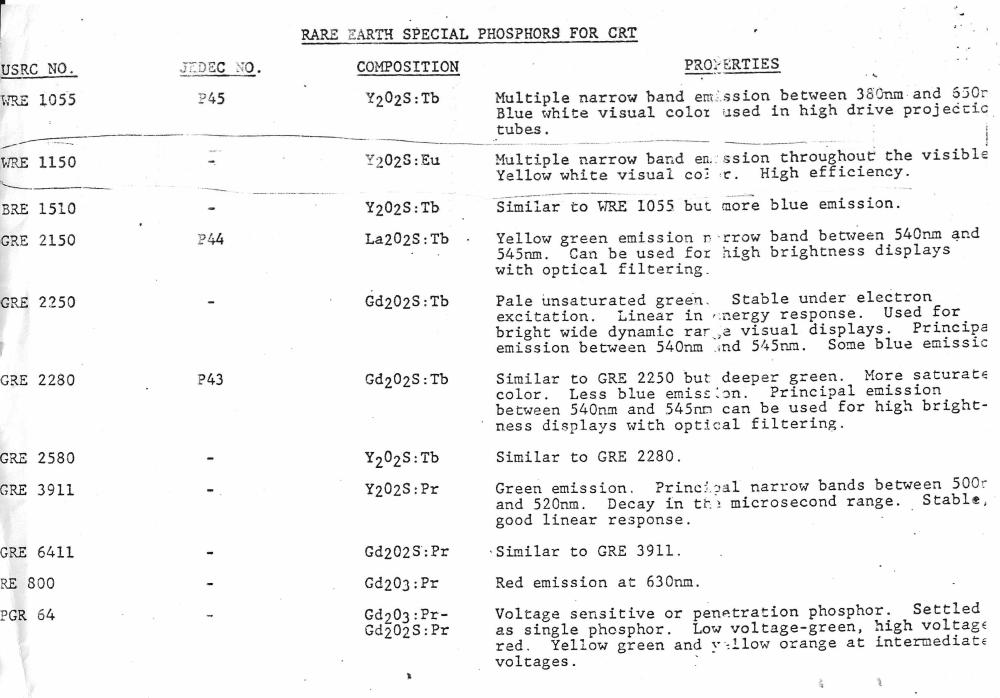Search the Community
Showing results for 'Radium'.
-

Today's movie tip: Radium Girls
Neverenoughwatches replied to VWatchie's topic in Watch or Horology Related Videos
We are all different mate and all prone to different diseases depending on our genetics. Cancers , heart diseases, respiratory issues, overactive immune illnesses, underactive immune illnesses,dementias etc, etc. Its about edging your bets mate, if cancer runs in your family then smoking is going to run your risk that bit closer. If heart disease then try to eat a healthy diet. Only fair to state the obvious that one person can be more susceptible to radium effect than another person. Precautions should ALWAYS be taken when working on old radium dials, but the risk of the individual should always be down to the individual and not influenced in any way. -
There's no need to be unduly worried, but do be aware of possible dangers The main concern is not to inhale any radium dust. You don't want alpha particle emitters in the body - it's what the Russians used to kill Alexander Litnivenko. No need to panic though. I would recommend wearing a mask when handling the dial/hands and wash you hands thoroughly afterwards. Store them in plastic bags until you need them. When assembled in the watch, the glass and metal case block the more dangerous alpha particles but not the less dangerous gamma. As to the dangers of wearing the watch, it's your choice : Here is a Universal Geneve I have with radium dial and hands (I want to keep this one original) which emits about 1 microsievert/h. (this is quite low for a radium watch - it could be tens to hundreds times higher) Normal background radiation is about 0.15 - 0.4 microsieverts/h. So if I wore it 10 hour/day for a year = 3.6 millisieverts. Which is about the same as you get from background radiation. The lowest dose for which cancer is clearly evident is 100 millisieverts / year. The radiation is all cumulative, so best not to add too much (x-rays, flying, CT scans etc) unless you have to. My choice is, I'm happy to wear this watch occasionally but I don't use it as a daily watch. If that was my watch, I'd remove the radium from the hands - which looks to be most of it, leave the dial, and don't sleep with it on ! This is worth a read : https://www.vintagewatchstraps.com/luminous.php
-
That looks like a lot of radium on the hands and dial. Take care : I wear a mask and gloves when working on radium dials. I work on some plastic sheet and everything I use for cleaning - q-tips, tissue, water, etc gets double bagged for disposal. All tools washed under the tap. Radium paint easily dissolves in water. I've just 'cleaned' the radium from the dial and hands of an old Rotary watch. I use water on q-tips to remove it from the dial, and use the ultrasonic to remove it from the hands. Then check it with a geiger counter, and re-clean until it doesn't detect any radiation.
-
One of the more "interesting" properties of some older clear plastic objects (and this includes old film stock, and some old watch crystals) is that they are made from nitrocellulose. Of course this makes them interesting in a similar way to the way that radium dials are interesting. They have a certain level of mild peril associated with them. Nitrocellulose is the main component of old fashioned "gun cotton" explosive. Nitrocellulose film stock for this reason is notorious for spontaneous combustion, and furthermore for being almost impossible to extinguish, since it contains its own oxidizer. The reason more recent types of film stock are called 'safety film' is because they don't have this rather inconvenient property. With this in mind, and if you are up for a small and mildly hazardous experiment, you might want to replace the yellowed crystal with a modern alternative, and then try burning the old one. If it burns rapidly and rather alarmingly, then it is made from nitrocellulose. If it melts and burns rather poorly, then it is a more modern acetate based crystal. The usual caveats apply, you obviously do this entirely at your own risk. Don't forget to film the results. Burning down your entire neighbourhood may well net you a viral video. You can thank me afterwards.
-
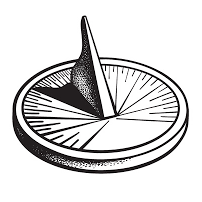
Add a geiger counter to your tool kit.....
Jack75 replied to bobtheterrible's topic in Chat About Watches & The Industry Here
There is a handy plug-in radiation monitor for the smartphone with Apple and Android Apps. It plugs into the audio port and for my Android system it compares well with my Japanese Geiger counter. eBay list several versions all from CN. Radium hand in watches are harmless - the alpha particles are stopped by the crystal and gamma radiation that escapes is nothing compared to the cosmic radiation dose received during a single trans-atlantic flight. Bare radium hands should be treated with care to avoid ingestion via nose or mouth. But if stored in a metal or plastic box they are also pretty harmless. There is good evidence that small doses of ionizing radiation (gamma rays) could be beneficial as it is supposed that they stimulate the immune system. In my radiation work I took a sizeable dose spread over many years and now at 85 never suffer from colds, flu or Covid. -
Should I be worried about radium?
JohnR725 replied to danizzz's topic in Chat About Watches & The Industry Here
I think the only real way to figure out at least radium is with the Geiger counter. The others have a long of a half-life that it's probably going be hard to detect those unless you have something really sensitive. That means basically they're not a problem. But radium is going to be a problem forever and I Geiger counter will definitely pick those up here's an amusing link the person talks about the letters all three are mentioned p.t & r but notice they're basically in reference to look how pretty The dials look. http://vintagewatchadvisors.azurewebsites.net/2019/07/20/seiko-pogue-authentication-part-ii-dials/ I think you'll find the next link interesting. There's a comment made about UV and how badly the phosphor has degraded Or basically UV is not a good test for radium. It's back to sensitive Geiger counter. https://www.hodinkee.com/articles/luminous-dials-what-makes-them-glow-and-how-to-spot-their-differences Problem with the question you have an marking dials is? They don't mark the dials with what they have unless there was some reason to. So initially radium was harmless so there's no need to put any markings on the dials. Then later on they did but I almost have a suspicion in the case of Seiko they might actually be referencing something else. So the R does not necessarily mean radium perhaps. The only way you can tell is with the Geiger counter.Then having Promethium And Tritium Shouldn't be a problem because her half life is short. What would be the interesting study is to study 100 watchmakers and see how many died from cancer of working on watches with radium dial's? I suspect the answer will probably be zero. Because it probably be impossible to figure this out and so many other things you could get exposed to that's bad for your health. -
Hi All, not been on line for a while. Not at all! Just that it was a surprise for me as I wasn't expecting radium dials/hands in this purchase. Admittedly I could have looked harder at the listing but it wasn't on my radar to have to deal with such. Without taking a reading I would not have known for sure and would have been much more blasé with handling. Direct exposure is not my main worry, rather inadvertent ingestion/inhalation of dust/paint through mishandling. Perhaps this is something that comes with more experience - I suspected at least one dial was radium but was surprised by some of the hands which I absolutely might have had a go at re-luming without much thought. This is likely to be an over reaction on my behalf but Im happy to know what Im dealing with. If this thread is just generating noise, I can ask the mods to remove it.
-
Be careful doing that. In the Forties, the luminous paint would definitely contain radium. Would you consider getting The Nekkid Watchmaker to do the restoration. He does very good work. He'll make a video of the restoration and all of us will get to see it.
-
You don't need to worry. The Kevlar will protect you!! I thought this topic had already been fleshed out on WRT, but I searched "radium" and did not find the thread. Bottom line...you need not worry...not for a moment. Do not lick the dial, nor the hands. I suspect that even if you did, it would have zero impact. I have several reports commissioned by the US government that provides an analysis of a variety of scenarios (professional watchmaker, amateur watchmaker, wearing in chest pocket, on the wrist, etc.). It is just not an issue. Moreover, my anecdotal evidence is that my father was a watchmaker working on watches from 1946 until 1990. I know he had and worked on many radium watches. He died at 93 of causes unrelated to radiation. Go read this thread. The documents I mentioned can be found there.
- 1 reply
-
- 1
-

-
I'm dropping this in the Chat About Anything Here topic as the subject pertains not to a timepiece but a rather a different instrument- a prismatic compass. I've been told an important part of any watchmaker's kit is a compass which can be used to determine if a mechanical watch is under the influence of magnetism. As the theory goes, place the compass next to the watch and if it's magnetized the compass will point to the watch instead of magnetic north. Perhaps this little bit of kit would have saved me some work in the past although I've been in the habit of demagnetizing watches before checking them out for sometime. Back to the story: my wife gifted me a nice liquid dampened lensatic compass several years back when we were still dating. She's well aware of my fascination with any instrument under glass and even tossed in a how-to booklet for orienting. Unfortunately between moves the compass disappeared. On the hunt for a replacement I began searching for a Francis Barker Mk III or M73 compass since they are considered the best in the business and I had long pined for one. Fortune favored me as I discovered a 1943 model, produced under license by the Canadian Kodak Company, in Greece (and in poor repair). The price was right so I made the purchase straight away and anxiously awaited my prize. This particular compass was produced Commonwealth soldiers during the war. The term Prismatic comes from the technology used to deliver a bearing to the user- a small prism built into the compass magnifies the reading on the compass rose which is visible as the user peers through the sight. The compass is also liquid dampened with kerosene; the liquid softens the movement of the card as it settles on a bearing. Luckily for me the poor condition of the compass assured it's delivery. You see, these compasses were painted heavily with luminous paint containing Radium 226. The Radium isotope is still highly radioactive today and there are many stories online of customers purchasing these antique compasses only to have them confiscated at the US border and destroyed when the Radium sets off alarms. The kerosene within my compass had long ago leaked out taking much of the Radium with it and rendering the compass relatively inert. My plan is to completely restore the compass to the original specifications while replacing the Radium paint with either Tritium capsules or Superluminova. Thus far I've only completed disassembly which you can see below. I'll update this thread as work progresses hopefully from start to finish. Here is the compass as received. The bowl containing the kerosene dampening fluid is empty now and water has entered at sometime resulting in oxidation and clouding of the crystal. Step one was to remove the rotating bezel which then gave me access to the eight screws sealing the bowl. The crusty white paint is either just that or Tritium or Promethium luminous paint as it gives of very little radiation. Originally it would have been Radium based luminous paint. Two small screws on the exterior of the compass secured the bowl to the housing. With the bowl opened and the card out you can see a bit of radiation is still present. The compass card would have been painted with Radium 226 inside the small lozenge pointing north. Also the card, which is cut from mother of pearl, is tranluscent; lying beneath the card inside the bowl is a small tray which also would have been painted with Radium 226. The copious amount of luminous paint would have guaranteed usability of the instrument during the dead of night. Various issues were uncovered during disassembly- the first being the oxidation of the magnetic needle. A lot of rusty debris was left in the bowl which came from the needle affixed to the bottom of the card. Water had entered the bowl at sometime oxidizing the only iron based component in the entire assembly. The needle must be magnetized in order for the compass to work properly so the rust may be a big problem. Furthermore, the water was clearly contaminated with Radium 226 as the needle is now highly radioactive. in the end I may need to replace the entire compass card. Here is a view of the debris accumulated inside the bowl. Which came from the mother of pearl compass card. You can see the printing of the compass rose is still quite crisp. In the center is a clear sapphire bearing (much like those found in mechanical watches). The underside of the compass card is a right mess though and since the rust is impregnated with Radium I'm not I can chance cleaning it. Secondary issues discovered included some not so nifty repairs from the past. The crystal within the lid for example was not a great fit and needed some help in the form of epoxy and an ill fitting gasket. Many screws had damaged heads too. This is the filler plug which has been manhandled in the past and sealed with a bit of epoxy. The gasket for the bowl was also a poor fit which is probably why the dampening fluid was missing. I've begun research to determine the proper material for a replacement- it will need to stand up to prolonged exposure to kerosene so natural rubber will not do. This job requires many of the same skills used in watch repair as the parts are small and made of soft metal (brass). With disassembly complete I'll move onto cleaning and have already begun researching replacement parts. When the job is done I'm aiming for a vintage compass which looks about as good as new and functions the same way. It's a lot of work just to check the magnetism of a watch movement but in my opinion restoring the tools is as much fun as restoring the watches.
-
I thought this article about Chernobyl was interesting...worrying about radium watches...lol.
-
technically those are not my pictures. I is search the Internet and then looked at the pictures and went through and found pictures representative of what I was looking for. Specifically dials with radium as their very distinctive. In other words exactly as watchweasol pointed out there is no residue of radium because you don't have a radium dial. The other thing was looking for was did they have hands that had no filling in them. Weather is radium or whatever and sure enough one of the pictures shows that you can look through the middle of the hand that's the one we can see the second marking. So obviously they had variations for the dial case and everything and that's what I went looking for with the pictures so I don't get any credit other than finding the pictures online. Suggest Google the title that you have and look at the pictures and there's lots of them out there.
-
Posted this up a good while back, but seeing as it fits in well and with some good History . Here is my Nato redialled Record DD, inside a 022K. Also has a broken staff pivot but i have around 20 of these. The serial number on the dial is designated specifically to Record, other brand redials will have different serial numbers . Redialled i would guess as a matter of routine service when called into army stores and to decommission the radium lumed dials. Serial number beginning with the letter L as assigned to the Record company. As most will know the Dirty Dozen watch was nick named after the film. So called as the British military approached 12 Swiss watch companies ( there is currently a british company called Vertex making the Vertex DD with some kind of dubious family connection imo but marketing stories sell, just look at the Daniel Wellington name crock of shite )with the task of making their mill spec watches. Look for the WWW stamp on the back. Wrist Watch Waterproof. These 12 companies in alphabetical order as i remember them easier this way. Buren. Cyma. Eterna. Grana. IWC. JLC. Lemania. Longines. Omega. Record. Timor. Vertex. In actual fact as part of the story as i read it Enicar was also approached but dropped out for whatever reason. All are worth a few bob but the Grana is the one to really look out for. Out of the approximate 250,000 DDs that were made the Grana (KF or KFG ) had an estimated manufacture of 1000 to 5000 ( not sure if anyone actually knows ) Coincidentally i do have 100 balance staffs for the Grana DD half fixed jewel half shock jewel. Great i have 100 staffs that will likely never be wanted .
-

Radium watch materials
clockboy replied to brunomartins's topic in Chat About Watches & The Industry Here
This is a good article on the subject. The bottom line is be very careful when handling dials and hands you suspect are painted with radium paint. Wear a face mask and wear finger cots. https://www.wristwatchreview.com/how-do-you-know-if-a-watch-has-radium-hands/ -
Bought this old Squale Medium last week. It’s cosmetically not too bad for its age, with the main issues being the crystal and the hand lume. It’s certainly not a valuable watch, but I do want to keep some of its character. The watch has a ETA 2452 which is running fairly well, but it is due a service and I’m also going clean up the crystal as I think it’s going to be tricky to get a replacement of the same type (please let me know if I’m wrong). So, the main question is what to do with the hands. The lume on the hands is discoloured, particularly on the hour hand, and viewing under a loupe I can see it’s started to disintegrate and leave powder on the dial. Looking at the state of the hour hand, I suspect the lume may come out when I remove it to service the movement as it's already started to detach. I don’t want to touch the dial and seconds hand lume unless absolutely necessary, so then the question is how best to match that colour if it does disintegrate on removal? I saw NickelSilver’s comments on another post Colour matching old lume about mixing chalk into the lume to give that grainier texture that old lume has, and this grain is especially noticeable on the seconds hand. The colour on the seconds hand and dial is more of a dirty green than discoloured white. Does anyone use coloured powder watercolour powder and if so, any particular type? On a slightly different note, is it normal for Tritium to go a reddish brown as I seem to remember reading somewhere that some older radium lumes go brown with age?
-
Well, I ground it down a little and it fit perfect.... so I have the back off... it has 3A58 on the back... not sure if that is a date or not.... I don't see any other numbers on the watch, but maybe it is under the bezel. You will be proud of me too Mo... I believe it is a M22 movement and I got the crown and stem out. The crown is really smooth too (have another one like that) so it is hard to wind. Do the crowns unscrew from the stem on the old Timex watches? One issue I am having with this watch is when I place it face down it runs, but when the watch is face up, it stops. Not exactly sure how to get the face off, but I think it is simply bending those little ears back. I also think there is some radium on the hands.
-
Help With Clock Identification Please
watchweasol replied to HouseofGeorge's topic in All Things Clocks
If the clock was installed in a military vehicle dash board I can imagine the dirt and condition they worked in. But like OHippy said the presence of oil means a good clean and off we go. The dial is most likely to contain radium as its from that era late 30s thro 40s and will have to be treat carefully as it’s condition looks flaky. I think windles will cover all points regarding the oiling. Cheers -

Help With Clock Identification Please
Endeavor replied to HouseofGeorge's topic in All Things Clocks
Just wondering, while you work on your nice clock, whether the lume on the dial and hands are from the radium age ? -
This popped up on ebay last week as a £50.00 buy it now During the Great war the British military had been issuing pocket watches to serving personnel and hadn't supplied wristwatches, these where instead bought mainly by officers privately for use at the front lines with wristwatches improving and the introduction of the water resistant cases, unbreakable crystals and radium dials the Trench watch was born and became an item of necessity for serving personnel. It wasn't until 1917 that the war department purchased the first batches of wristwatches supplied in two forms the first being a classic trench watch of water resistant case, black dial with radium numerals and unbreakable crystal and the second type being a large cased snap back, black dial with radium numerals all had 15 jewel Swiss movements. These watches where purchased for the purpose of evaluation to assess the usefulness of issuing wristwatches to serving personnel. This watch is of the snap back type and has a unusually large for the period 38mm case made of nickle, the dial is black enamel with radium numerals. All the snap back models have issue numbers that follow the same form a five digit number beginning with a nine followed by a letter M there is also a Broad arrow mark or Pheon crudely stamped on to the back some watches are stamped with two broad arrow marks that touch at the tip this is thought to indicate that the watch had been withdraw from service. The movement in these large snap back models is the same in all known watches where as in the water resistant 1917 watches there is some variation. The movement is a good quality 15 jewel movement and no one has yet been able to identify who manufactured them there are no identifying marks but there is a brevet patent number on the dial side so it may be possible to trace that and establish who made the movements. No one is sure what branch of the armed forces these snap back watches where issued to but it cant have been to front line personnel because having no water resistance would have rendered them pretty useless in the field, many have speculated that they could have been issued to the flying corps because the design mirrors quite closely the pocket watches already issued to them at the time, these snap back models where only issued in 1917 and withdraw from service shortly after, but the water resistant watch became a regular issue watch there after It is however an interesting footnote in the development of the military wristwatch and is amongst the first officially issued and stamped British military watches of the Great War.
-

Should I be worried about radium?
AndyHull replied to danizzz's topic in Chat About Watches & The Industry Here
One of the alarming aspects of this is that radium used on an industrial scale like this presumably resulted in the disposal of large volumes of contaminated scrap and incinerated materials. This was often done on site, without any documentation or thoughts for the environment. One or two radium painted dials may not present any significant hazard, but the large scale disposal of waste associated with these industries does, and as such it also presents a major clean up headache. I've posted about the glowing beaches of Delgety bay before, and also about Timex Dundee paying a contractor to dispose of dial waste drums in the North sea. Allegedly they were simply hurled from the side of a fishing boat into the Tay estuary, where they no doubt are slowly making their way into the environment. https://www.bbc.co.uk/news/uk-scotland-edinburgh-east-fife-23098001 https://www.researchgate.net/project/Construction-Site-Health-and-Safety-Dealing-with-Radium-in-site-remediation There is nothing particularly unique to Scotland about these activities. I have no doubt this sort of practice went on around the world in whatever areas radium and other materials of this nature were being processed and used. Out of site, out of mind seems to have been the overriding driving force behind this disposal. Get rid of it in some "remote" place and nobody will notice. Keep the financial costs low and to hell with the environmental consequences. -

Should I be worried about radium?
mikepilk replied to danizzz's topic in Chat About Watches & The Industry Here
Yes, but it Swiss watches it was phased out in 64-65. I haven't found anything about Japanese watches and when it was changed. I've done a bit of Googling, and the opinion seems to be : "Unfortunately, doubts have been cast on the idea that the letters “R”, “T” or “P” printed alongside other numbers at the bottom of the dial on some Seiko watches relate to the lume terms “Radium”, “Tritium”, and “Promethium”, especially for watches made after Seiko had abandoned the use of radium lume". I bought a cheap geiger counter so that I can check pre '65 watches. Some really send it spinning ! -
Should I be worried about radium?
EFan replied to danizzz's topic in Chat About Watches & The Industry Here
I recently bought a Seiko 62MAS (1966 or 1967). It’s a lovely watch but I’ve stumbled upon a lot of articles about radium lume and it’s making me a little nervous. Does anyone know of Seiko was still using radium for their dials in the 1960s? -
I recently retired and decided to re-start the watchmaking hobby I gave up 40 years ago. Having blown the dust off my old lathe and tools, pulled out my large box of movements, parts etc including a box of a dozen or so watches I kept seperate because they triggered my radiation detector, Radium yuck, I decided to look at some forums. There are many but not all are friendly to all, in particular there is a lot of snobbery towards youngster newbie's, yet they are the very people the industry needs as experience watchmakers are retiring or visiting the big cannon pinion in the sky and not being replaced in sufficient numbers. This forum stood out as being friendly to all, in particular the younger newbies that are desperately needed to keep the profession ticking. So how could I not join I have 40 years of dust to blow away.
-
The good thing is with the internet is that you sometime meet with good fairies. One of my fairy is Niall who gave me a bunch of SWCS NEWS and leaflets/ catalogs etc for free of charge again. I got no time to go trough the whole lot but in the Watch and Clock collection leaflet made for years 1988/89 I found a letter/offer which does list the name of the ppl in the management so now I finally can try to find one of those ppl who worked for SWCS. My initial google search was not successful though. If you have any idea how to find them please let me know. And then it seems that US Radium apart from poisoning ladies also made rare earth special phosphors for CRTs. Shall I wash my hands now?

